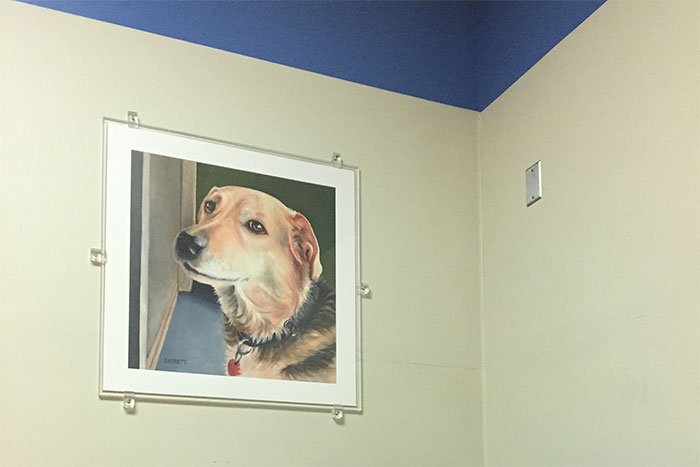They had my son empty his pockets. He took off his socks and flipped them inside-out so they could see he wasn’t harboring anything under his arches. He was handed a pair of maroon scrubs and told to put them on in the bathroom around a corner. A security guard followed. From my position on a small couch, I could hear crisp knocks. “Are you okay in there?” Yes, he answered. Fifteen seconds later this would repeat. He came out holding his clothes in a wad. A nurse took them and stuffed them into a clear plastic bag. One held a metal detector and waved it over, around, and under him. They told him to join me in a small private waiting area just off the psychiatric intake station.
The maroon scrubs were shiny. I felt a sleeve. He said, “It’s paper, I think.” The top was voluminous, like a pro football jersey without the pads. The bottoms were cropped, hitting him just below the knee, but tighter. He shook, but denied being cold.
The intake station was in constant use. Kids came in a steady stream and were put through the same motions; searched, dressed, stuffed, wanded, take a seat in that room, or that, or that. So many arrived, they spilled into the hallway. The word “epidemic” is not hyperbole. Despair is having a field day.
A nurse named Mike joined us and asked a few questions. Then, he apologized for the setup and decor. “It’s a safe room.” The room contained the small couch, a large chair that appeared to unfold into a bed, and a strange picture of an oddly kind dog. It was covered in thick plastic which was bolted to the wall. Safe, yes. There was nothing in there that could hurt anyone other than the hurt we brought with us. Had either of us had the sudden impulse to try to commit suicide via picture frame, we were thwarted. Kind Dog’s steady gaze was another deterrent.

Mike left. My son was tired, so I moved off the couch to the chair under the dog. He tried to stretch his six feet out into a semblance of comfort, put couldn’t. He continued to shiver and I asked if he wanted a blanket. No.
A woman rolled a computer cart into the room. She introduced herself as a clinician who would gather information to pass along to the psychiatrists. They’d decide what level of care he’d need. I was led out of the safe room and into another larger version down the hall so she could speak to him alone. It was empty but had enough room to seat a dozen. Here, too, the artwork was bolted under plastic.
I sipped water and prayed. I prayed and prayed and prayed he’d be honest and the clinician would be wise. My biggest fear was losing my son, but he was safe so I pivoted my terror to the idea these people would see him as just another crazy kid, literally. There were so many in the maroon uniform. With each of these precious ones were family members. They walked by. Sometimes, I’d catch an eye or they’d catch mine. It wasn’t intrusive or disrespectful. There is great solace in the power of recognition. We weren’t alone. We were gutted and bewildered but shared a common knowledge.
It was better to be bolted under plastic than not.
A children’s psych ward is the second worst place in the world. The first is a funeral home.
Leave a Reply